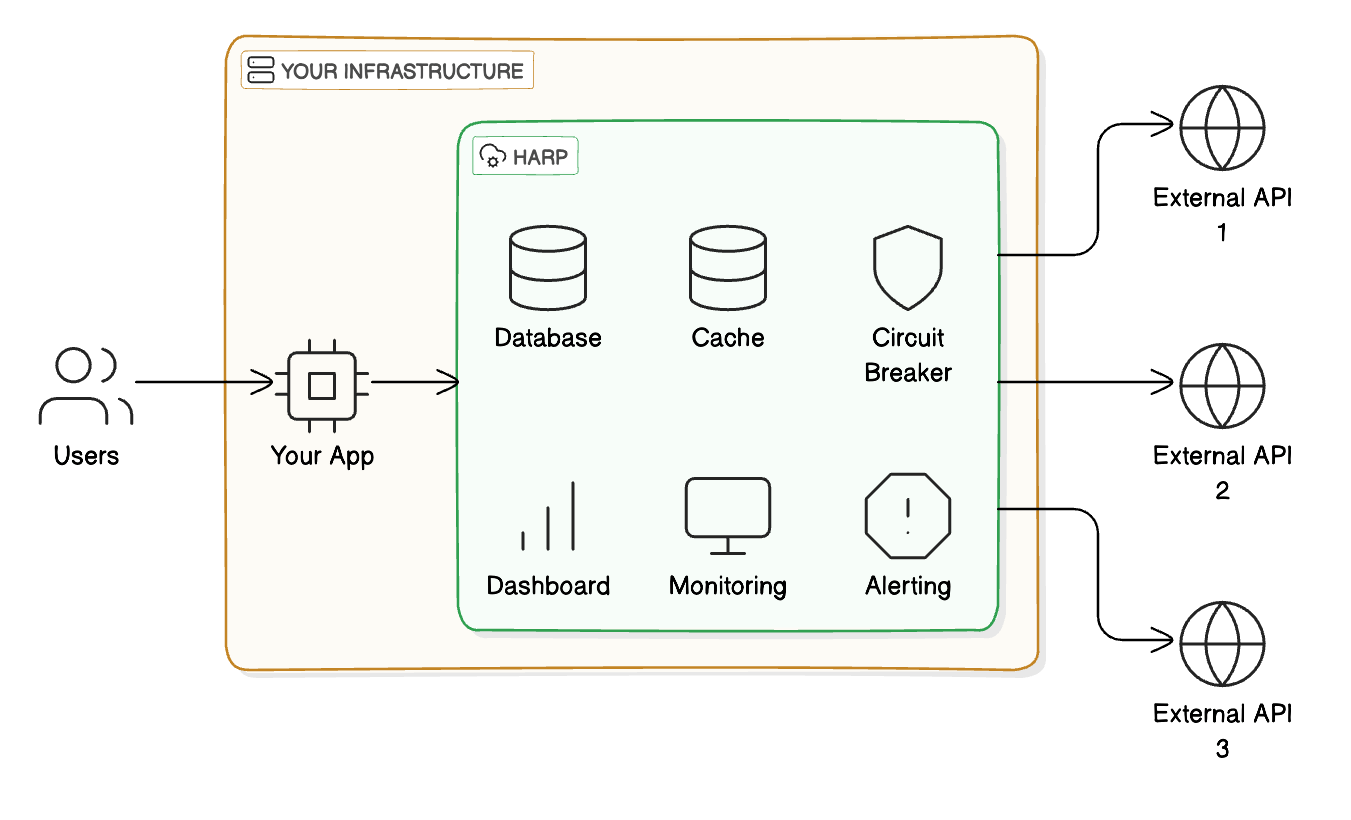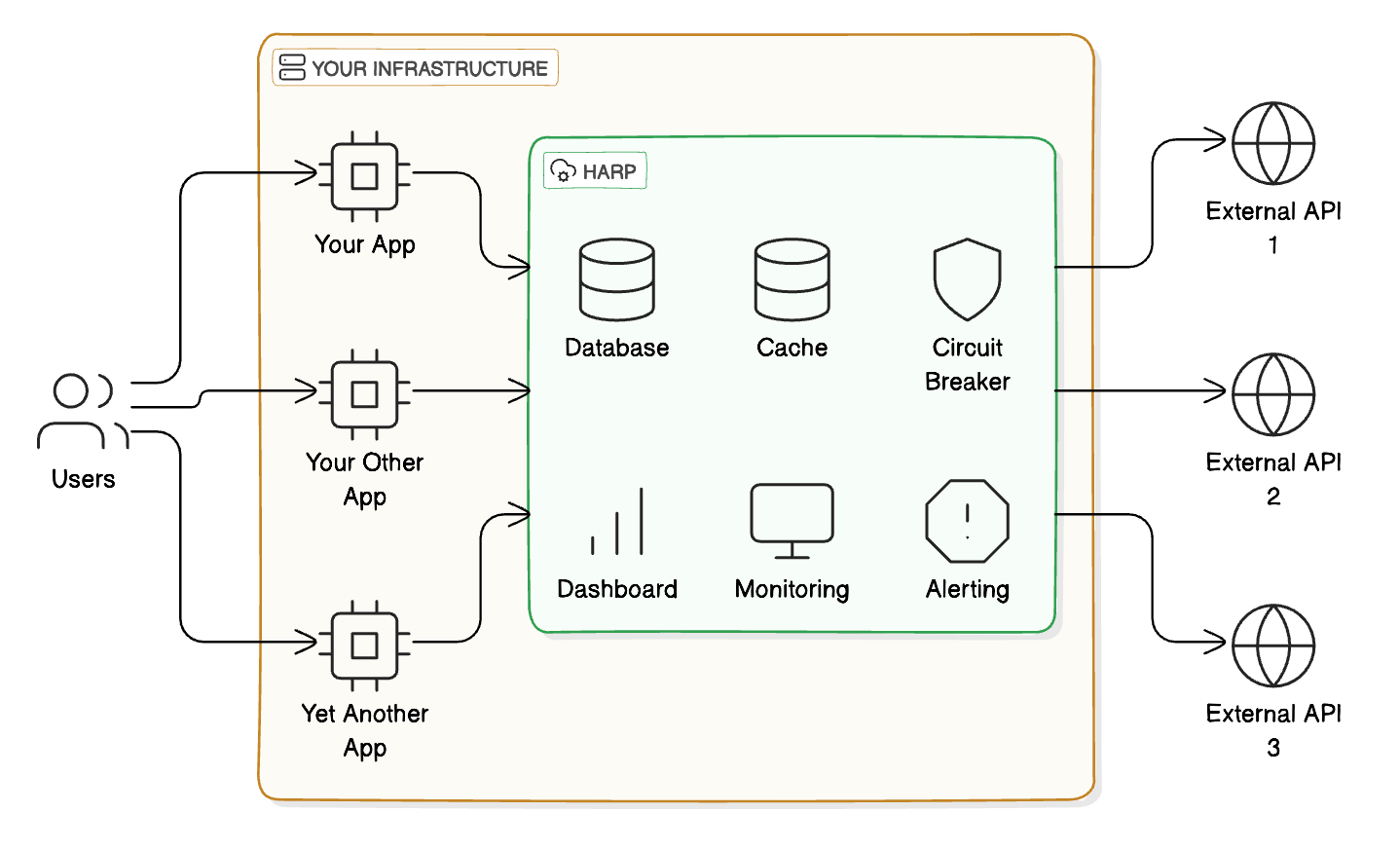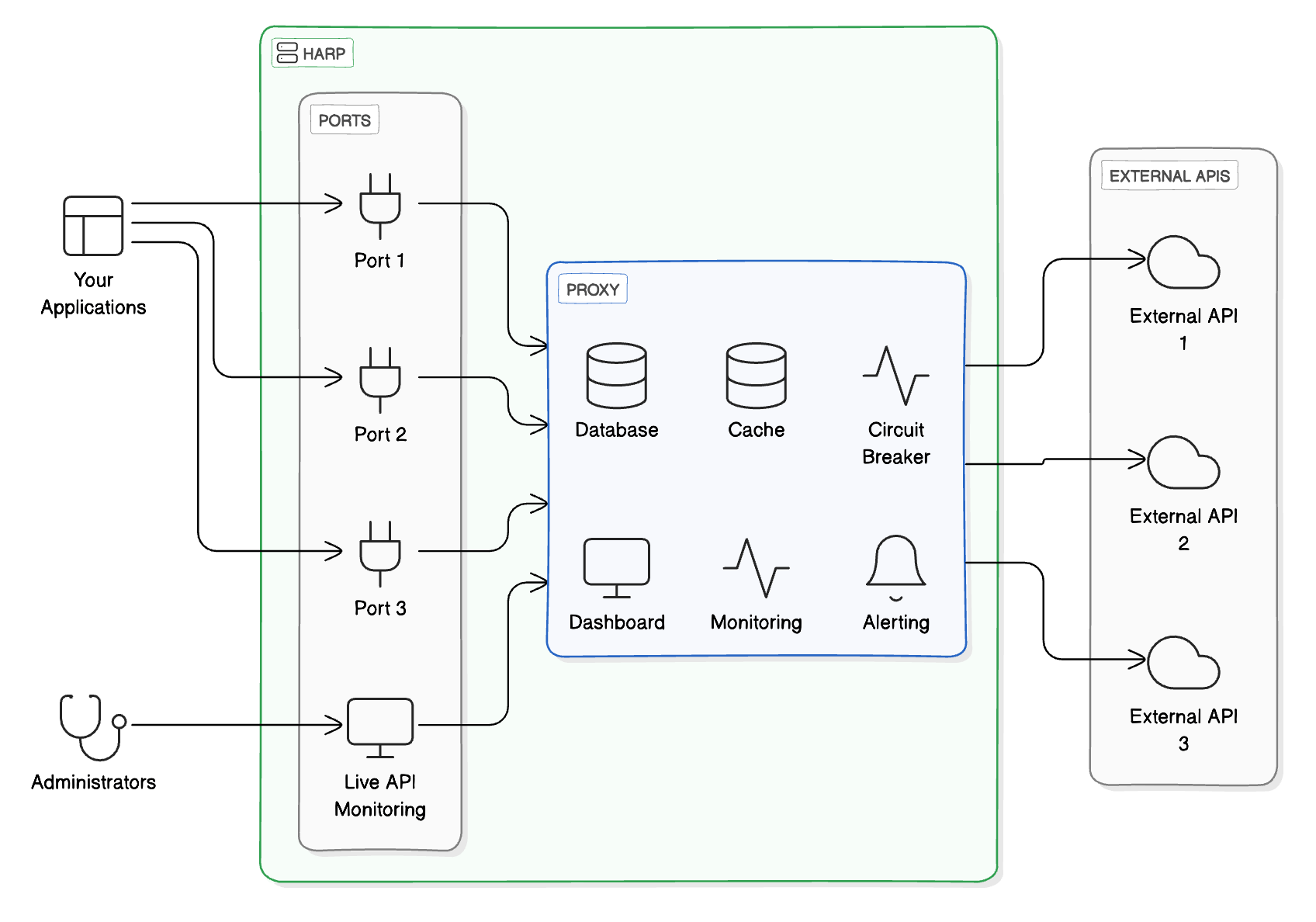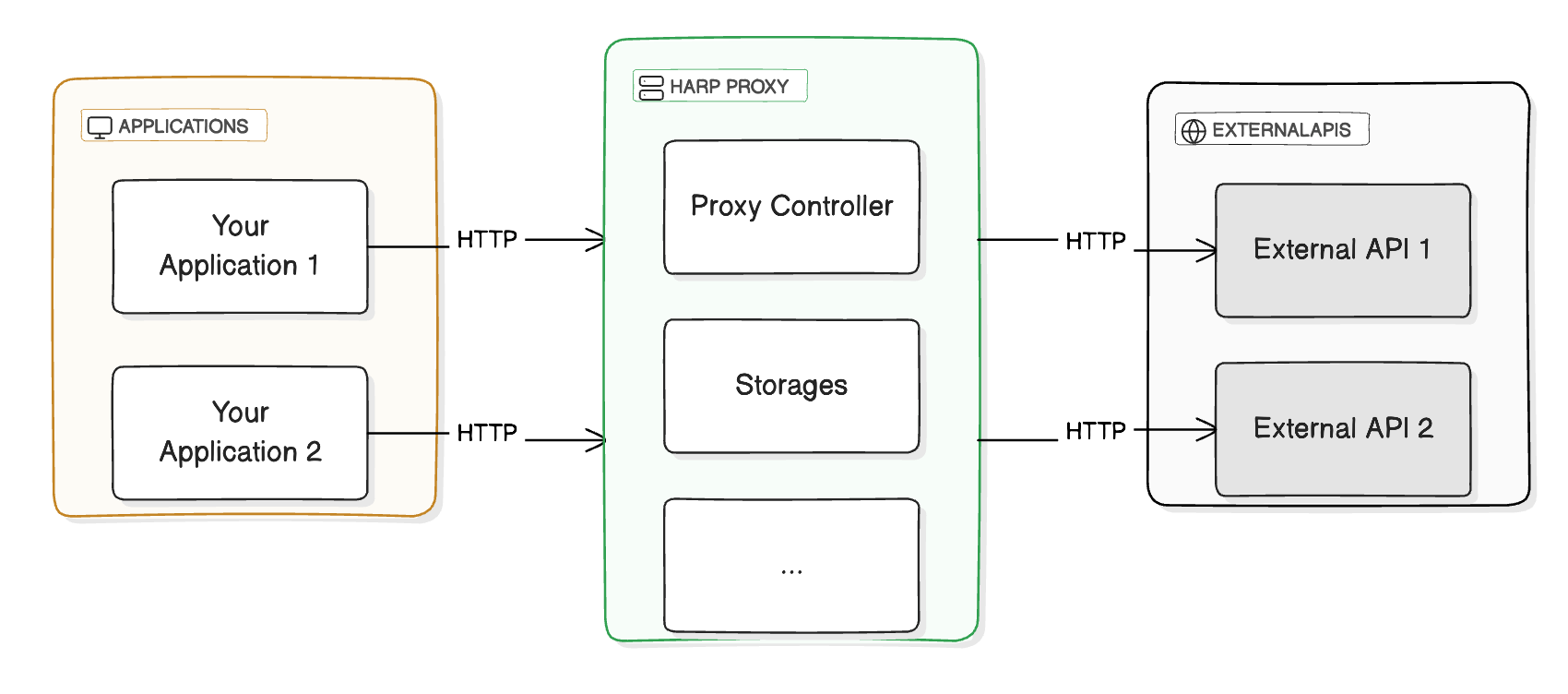Harp is an API Runtime Proxy – A toolkit for Fast, Reliable and Observable external APIs
Project description
HARP is a powerful sidecar proxy service designed to elevate the reliability, performance, security, and observability of your application’s external API interactions. Think of it as a reverse API gateway or a nearline service mesh for external APIs.
HARP is released as an Early Access Preview.




Although we use HARP for production workloads, it is still under heavy active development and some features may not be available, or it may not be suitable for your applications. We are actively looking for feedback, please reach out with your thoughts, ideas, rants or issues. We can help.
Quick links: Documentation | Getting Started | Install (Docker) | Install (PIP) | Repository (Git) | Issues | CI/CD
How it works?
Overview

Easy Integration: Integrating with your application is a breeze, because it speaks the same language you already use: HTTP. Simply run the proxy, update your API endpoints, and you’re ready to go. No complex setup or extensive configuration required. Of course, everything is modular and configurable, so you’ll be able to fine-tune for your taste later.
Reduced Network Distance: As a nearline proxy, HARP minimizes the network distance between your application and external services, when possible, using standard techniques like caching or prefetching. This leads to faster response times and improved overall performance of your application, even before any configuration is done.
Simplified Development: HARP eliminates the need for writing extensive code for functionalities such as caching, monitoring, alerting, rate limiting, circuit breaking, retries, tracing, logging, and more. These features can be easily delegated to the proxy, reducing the amount of code you need to write and maintain.
Seamless HTTP Integration: HARP seamlessly integrates with your application using the HTTP protocol. This means that the integration or removal cost is virtually zero, or even negative when considering the reduction in code you won’t need to write.
Hub to external services

Mutualize Client Logic: Having n API consumers does not mean you have to implement n times each client-side feature. Use HARP as a hub and greatly reduce the amount of client code you need to write and maintain.
Observes and Controls: You get a central place to observe and control all your API interactions.
Grow and Scale: As your company grows and develop new applications, you can leverage the work done on existing external services without having to write a single new line of code.
Service
Within the service, harp runs one or more proxies, each one listening to one port to instrument your external API calls with the features you need (auditing, caching, alerting, circuit breaker switch, health checks, etc.).
Each proxy is configured to intercept and forward requests to a specific external API, with independent configuration.
An additional (optional) port serves a dashboard to observe your proxies in real-time.

Features: Harp comes builtin with a set of industry-standard client side features that you can leverage with a few lines of configuration.
Flexibility: Each feature is optional, and it’s up to you to chose the setup that fits your needs.
Customizable: You can write code to extend the proxy features, using the same interface as all the builtin features. It guarantees that you can basically implement pretty much anything that make sense inbetween your applications and the external services.
Proxy
As an HTTP Proxy, HARP does not change anything to the way you communicate with the external services. You were speaking HTTP before, you will still speak HTTP. The only change needed in your applications configuration to plug or unplug HARP is the base endpoint of the external services. In a modern 12factor-like application, it usually only means changing an environment variable.

Reversibility: By requiring 0 code change on your application side (except endpoint url configuration, that should be outside the code if you follow the 12factor principles), HARP can be plugged and unplugged at a very low cost. You have absolutely no vendor lock-in.
Sidecar: Harp runs in your infrastructure, implementing the client side features right next to your application. The service is fast, and the minimum network distance between your application and the proxy makes it even faster.
Open Core: Harp is an open software. The core and reference implementation of the proxy is open source, and you can extend it to fit your needs.
Proxy features
Credits
Core contributors:
Original idea, design, and development:
Sponsored by Makersquad
Project details
Release history Release notifications | RSS feed
Download files
Download the file for your platform. If you're not sure which to choose, learn more about installing packages.
Source Distribution
Built Distribution
Hashes for harp_proxy-0.6.0-py3-none-any.whl
| Algorithm | Hash digest | |
|---|---|---|
| SHA256 | 068bf6b1d5227d4f47bee5cf4065aaa513da43e529ca2bb5a4db1055fee02012 |
|
| MD5 | 75dd86b49ffca6c8954519ff2b415b4b |
|
| BLAKE2b-256 | 2a551db3dcaf2ec837d5791831cd0148aa0f0ef3b158ff0da6e89bf71433b3ba |











